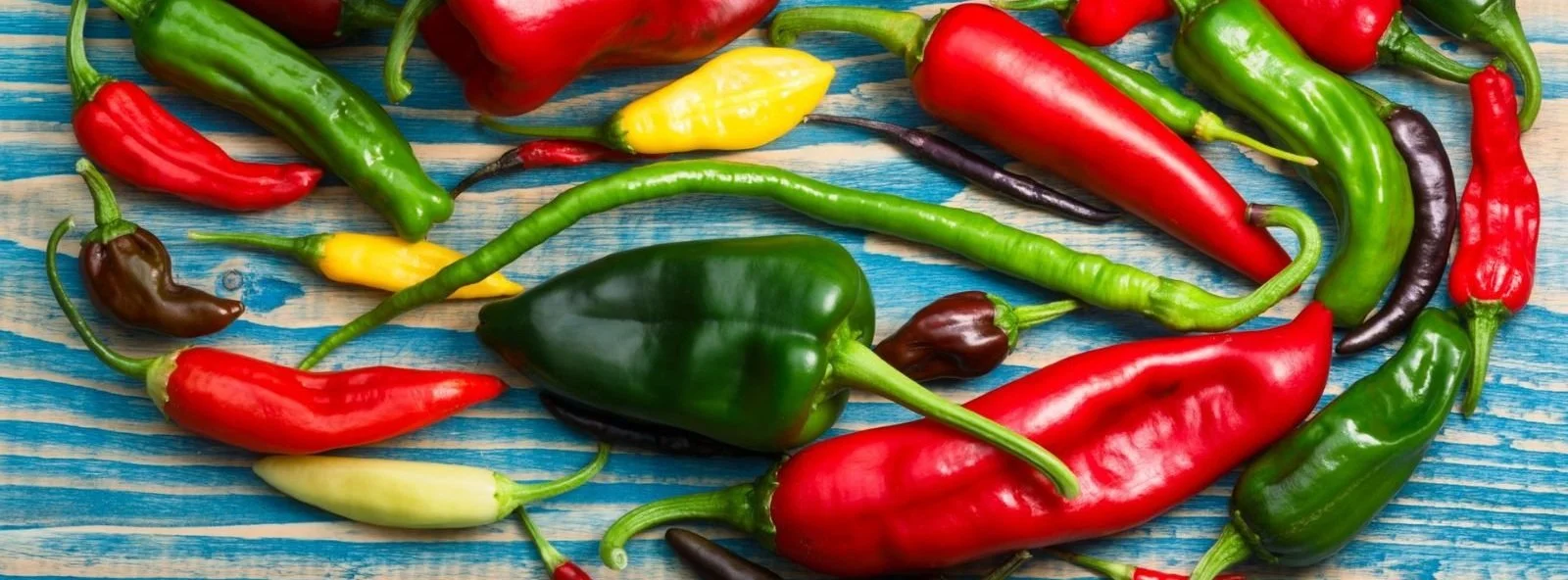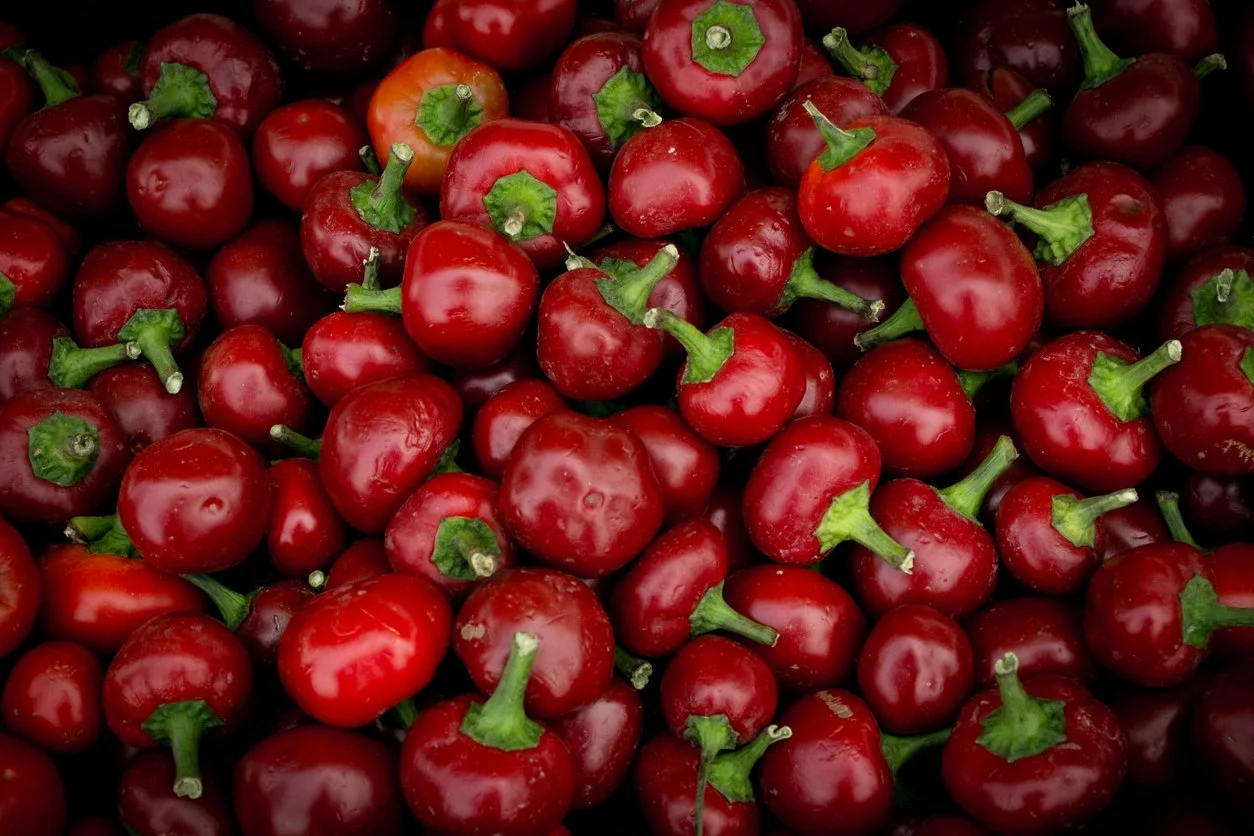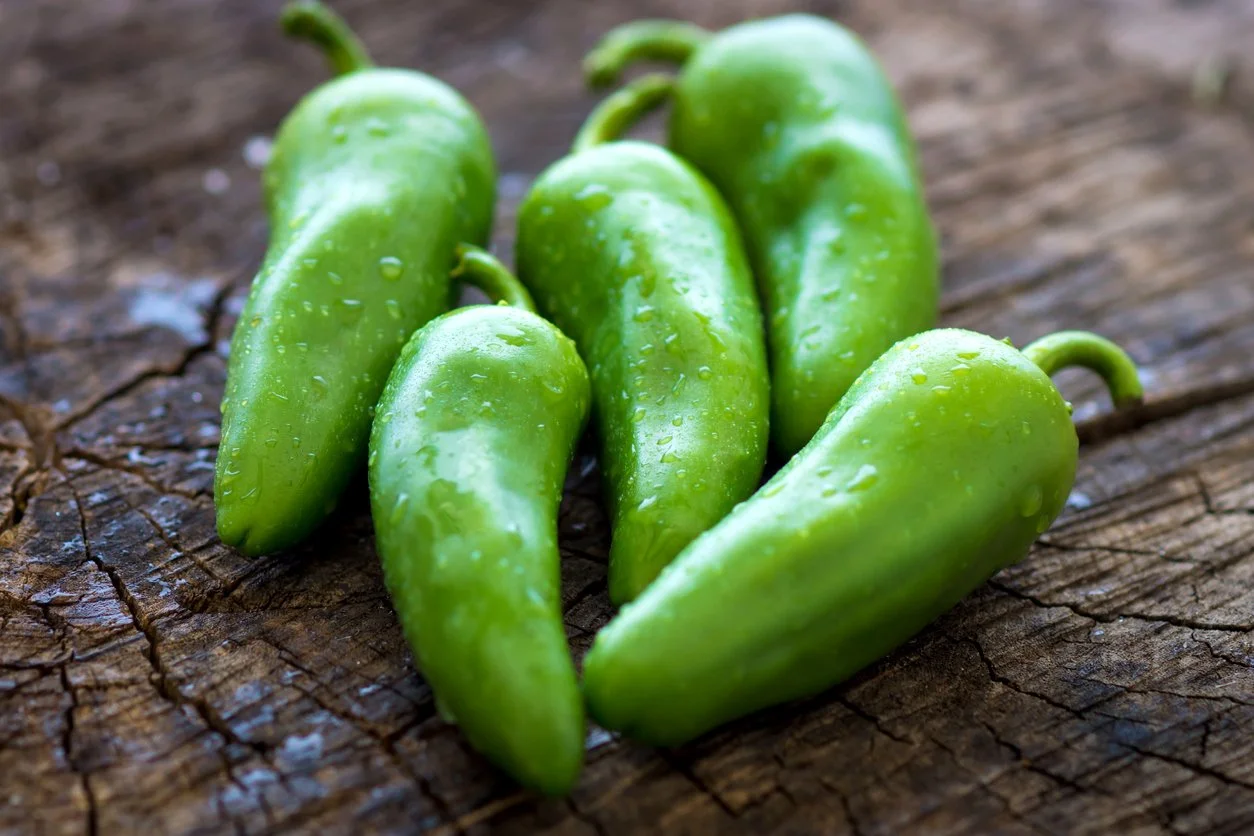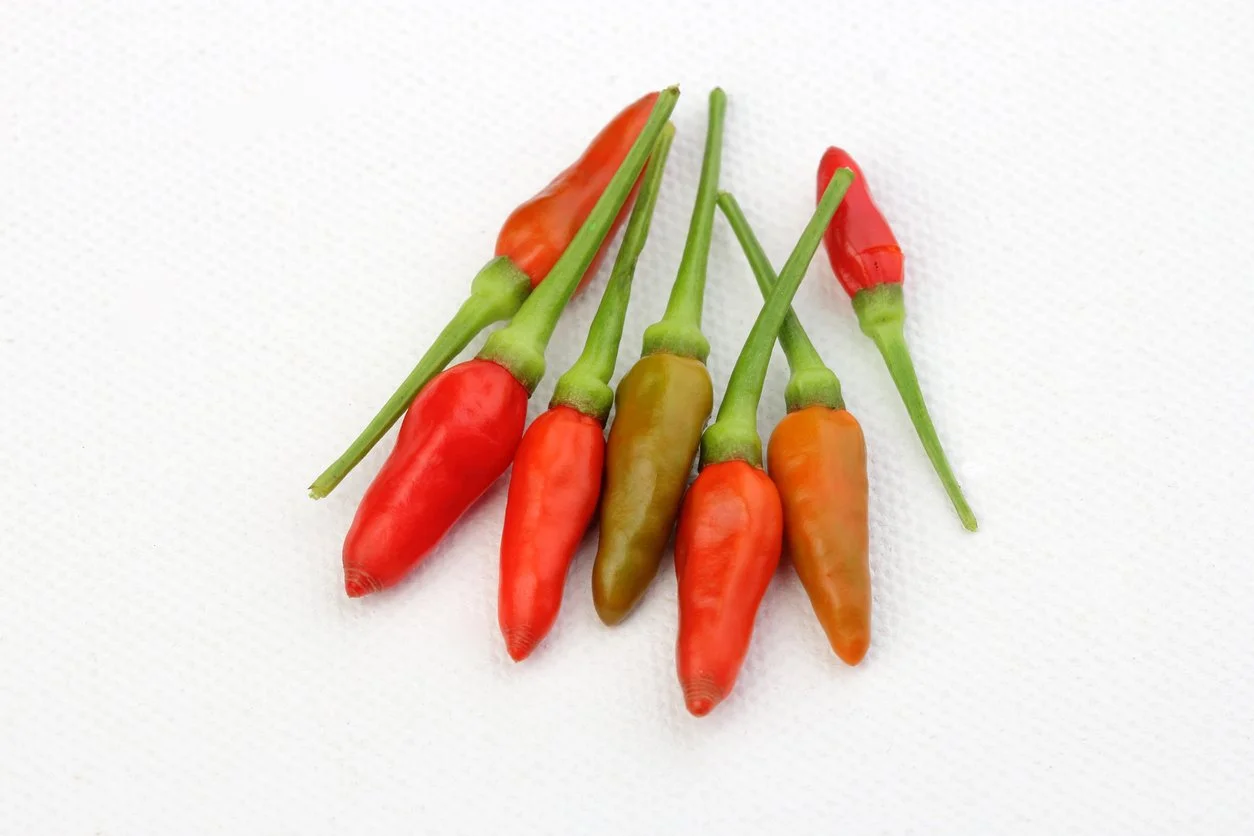Hot Peppers as Hot as the Season!
Discover > Texas Home Cooking > Hot Peppers as Hot as the Season!
In Texas, peppers are available year-round, but they peak in late summer and early fall. This is when you'll find the widest variety and the best prices. Whether you're looking for sweet bell peppers (What wine goes well with bell peppers?) or hot peppers, Texas has what you need. Whether you like them spicy or sweet, peppers add flavor and nutrition to any dish. Peppers are in season from late spring through early fall, so now is the perfect time to add them to your favorite recipes.
What's in Season: Hot Peppers as Hot as the Season
Spice up your culinary journey with the scorching flavors of hot peppers! Explore what's in season and learn how to add fiery excitement to your Texas-inspired dishes.
What are Some of the Different Types of Peppers?
Some of the most popular types of peppers grown in Texas include bell peppers, jalapeños, and habaneros. Bell peppers come in a variety of colors, including red, yellow, and green. Jalapeños are a type of chili pepper that range from mild to very hot, while habaneros are one of the hottest peppers available. Here are the most popular types of peppers that you can find in Texas now that they're in season. Peppers also make an amazing addition to your spice collection.
Bell Peppers
Sweet bell peppers are delicious raw or cooked. They're available in a variety of colors, including red, green, orange, and yellow. They're also dried and crushed into paprika.
Bell Pepper Heat Level: 0 Scoville Heat Units (SHU)
Shishito
These are often roasted and blistered. Once charred and drizzled with oil or sauce, they make a great appetizer on their own. But beware, eating them is a gamble, It’s a mostly tame pepper, but there is usually one spicy shishito in the bunch. You just don’t know which one until you bite into it. But think of all the fun!
Shishito pepper Heat Level: 50 to 100 Scoville Heat Units (SHU)
Banana Pepper
Banana peppers are a sweet pepper, they’re often used on sandwiches, salads and pizza. If you want a bit of zing on top of that pepper flavor, go ahead and replace your boring old bell peppers.
Banana Pepper Heat Level: 0 to 500 Scoville Heat Units (SHU)
Sweet Italian Pepper (Pepperoncini)
Pepperoncini and Banana pepper are often confused with each other since they have many characteristics in common and can usually be used interchangeably. Pepperoncini peppers have a little more tang than banana peppers. They have a uniform spiciness so it's perfect for adding that pepper taste without any surprises.
Pepperoncini Heat Level: 100 to 500 Scoville Heat Units (SHU)
Pimento Pepper
Cherry peppers are also known as pimento peppers and are a key component in pimento cheese (hence the name!). They're a wonderful stuffing pepper option because they aren't very hot and come in second place on the Scoville scale, right after bell peppers.
Pimento pepper Heat Level: 100 to 500 Scoville Heat Units (SHU)
Piquillo
These are most often found in cans or jars at specialty foods shops, but you may find some at your local farmers markets if you have any specialty pepper growers in your area. They can be pureed and used in sauces, or they may be stuffed with cheese baked and served as an hors d'oeuvre. They aren't usually considered to be particularly spicy, like the Anaheim or poblano peppers.
Piquillo pepper heat level: 500 to 1,000 Scoville Heat Units (SHU)
Cuban Pepper (or Cubanelle Pepper)
Cuban peppers are often used in place of bell peppers because of their heat levels. They're mild enough to be bearable for a lot of folks but they still pack enough heat to make things interesting. Cuban peppers are still considered sweet peppers when it comes to the big picture.
Cuban pepper heat levels: 1,000 Scoville Heat Units (SHU)
Anaheim Peppers
Anaheim peppers are usually canned, so if you spot any green chiles on the shelves then they're probably Anaheims. They're closely related to hatch chiles which are hotter. On the hotness scale, they're a bit lower than jalapenos and they still have a bit of sweetness in them which is why they're the most popular type of peppers for canning.
Anaheim Pepper heat levels: 500 to 2,500 Scoville Heat Units (SHU)
Poblano Peppers
Dried poblano peppers are also known as ancho chilis. We'll cover anchos later when we get to the dried chili section part, but for now let's focus on the poblanos. Poblano peppers sit right in the middle of sweet and spicy with mild to medium heat levels, juuuuust a bit spicier than pimientos and piquillo peppers. Fresh poblanos are great for roasting to add that smokey flavor that complements great with their spiciness. Heard of chile relleno? Poblanos are the star of that dish!
Poblano pepper heat level: 1,000 to 1,500 Scoville Heat Units (SHU)
Pasilla Peppers
Ever had Mole sauce? (Pronounced mow - lay) some people like to use anchos in there, but Pasilla peppers are the pepper of choice for a more authentic taste. They're still a bit milder than jalapenos but they sure do the job well!
Pasilla pepper heat levels: 1,000 to 2,500 Scoville Heat Units (SHU)
Jalapeno Peppers
Just a bump up from Anaheim and poblano peppers, jalapenos start to bring the heat. As one of the more common peppers to cook with, they go great in everything from chilis and soups to salads. A chipotle pepper is simply a smoked jalapeno pepper.
Probably the most popular peppers in Texas. They go well with any dish you can think of and they add just the right amount of heat! From chili, soup, and even salad, everyone knows the humble jalapeno! Have you heard of chipotle peppers? These are just smoked jalapeno peppers!
Jalapeno pepper heat levels: 2,500 to 8,000 Scoville Heat Units (SHU)
Fresno Peppers
Fresno peppers are like Jalapeno peppers, only they're usually available when fully red. They're a step higher in the heat scale than jalapeno peppers with a notable difference, they're sweeter than jalapenos. You can find them in many Mexican and Latin dishes!
Fresno Pepper Heat Level: 2,500 to 10,000 Scoville Heat Units (SHU)
Serrano Peppers
Very similar to jalapeno peppers, but much hotter. They're great in salsa and guacamole if you're looking for that extra kick and find jalapenos to be too mild.
Serrano Pepper heat level: 8,000 to 22,000 Scoville Heat Units (SHU)
Guajillo Peppers
Another pepper that has made its mark on mole sauces is the guajillo pepper! Spicier than jalapeno peppers and pasillas, dried guajillo is THE pepper people think about when it comes to mole sauce.
Guajillo pepper heat level: 2,500 to 30,000 Scoville Heat Units (SHU)
Cayenne Peppers
Now we're getting into some spicy territory here! Cayenne peppers are hotter than everything that comes before in this list. They come in a wide variety of colors from green, red, and yellow (which are called cayenne gold peppers)
Cayenne Pepper heat level: 35,000 to 50,000 Scoville Heat Units (SHU)
Rocoto Peppers
A word of caution, these look like bell peppers at first glance, but they can be as hot as habanero peppers at 100,000 SHU!
Rocoto Pepper heat level: 30,000 to 100,000 Scoville Heat Units (SHU)
Bird’s Eye
Another name for Thai Chile, Bird's eye peppers are small in stature, but can easily burn your mouth! Popular in Thai cuisine and in Filipino dipping sauces.
Bird's Eye heat level: 50,000 to 100,000 Scoville Heat Units (SHU)
Piri Piri Peppers
Often used in African and Portuguese cuisine, these peppers are on the high end of the scale when it comes to edible hot peppers. Made famous by sauces from Nandos and other joints offering Piri Piri Chicken!
Piri Piri heat level: 50,000 to 175,000 Scoville Heat Units (SHU)
Habanero Peppers
We're about to the end of our hot pepper section and habaneros deserve a notable mention. They're some of the hottest peppers (that are safely edible). While they are truly hot, habanero peppers have a pleasing fruity undertone to it that makes them perfect for blending with fruits (especially mango!) to make some really amazing sweet, fruity, and hot sauces (how long does hot sauce last?)!
Other Super Hot Peppers
There are other hot peppers, but they're mostly for niche use, and we can't really recommend the home cook to experiment with these. Leave the handling of these peppers to the professionals and just get their finished products. Here are the current 10 super hot peppers in the world.
Carolina Reaper 2.2Million SHU
Trinidad Moruga Scorpion 2 Million SHU
7 Pot Douglah 1.8 Million SHU
7 Pot Primp 1.4 to 1.5 Million SHU
Trinidad Scorpion 1.4 Million SHU
Naga Viper 1.3 Million SHU
Ghost Pepper 1 Million SHU
7 Pot Barrackpore 1 Million SHU
6 Pot Red Giant 1 Million SHU
Red Savina Habanero
How to Buy Hot Peppers?
When buying peppers, look for ones that are brightly colored and have a smooth, firm skin. Avoid peppers that have blemishes or bruises. Note that this is applicable for all peppers! Some pepper may look wrinkled, but just make sure that the skin itself is smooth!
If you're not sure how spicy a pepper is, ask the seller or refer to our list above. The Rrule of thumb is that the smaller the pepper, the spicier it is likely to be, unless you're talking about Rocoto peppers that look like bell peppers! And the superhots which are all roughly the size of golf balls.
When storing peppers, keep them in a cool, dry place. If you plan on using them within a few days, they can be stored in the refrigerator. Otherwise, they can be frozen for up to six months.
If you're looking for a real Texas-style treat, try making your own hot sauce using our easy-to-follow fermentation guide here. And if you have a bumper crop of peppers, don't forget that you can always freeze them for later use.
Don't forget to hydrate! The summer heat can be punishing and eating hot peppers can make the heat worse!
What's your favorite hot pepper? Let us know in the comments below!










